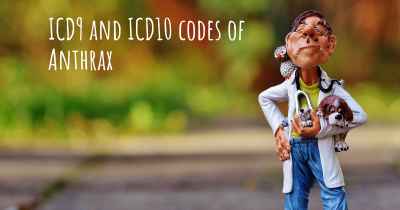What is the life expectancy of someone with Anthrax?
Life expectancy of people with Anthrax and recent progresses and researches in Anthrax

Anthrax is a severe infectious disease caused by the bacterium Bacillus anthracis. The life expectancy of someone with anthrax depends on various factors, including the type of anthrax infection, the individual's overall health, and the promptness of medical intervention.
There are three main forms of anthrax: cutaneous, inhalation, and gastrointestinal. Cutaneous anthrax, the most common form, has a high survival rate if treated promptly with antibiotics. Inhalation anthrax, although rare, is more severe and can be fatal if not treated early. Gastrointestinal anthrax is also rare but has a higher mortality rate.
Early diagnosis and appropriate treatment significantly improve the chances of survival. It is crucial to seek medical attention immediately if anthrax is suspected.
Anthrax is a serious infectious disease caused by the bacterium Bacillus anthracis. It primarily affects animals but can also infect humans through contact with infected animals or their products. The severity of the disease can vary depending on the route of exposure, the dose of the bacteria, and the individual's overall health.
When anthrax infects humans, it can manifest in different forms: cutaneous (skin), inhalation, and gastrointestinal. The cutaneous form is the most common and least severe, accounting for approximately 95% of cases. It typically presents as a localized skin infection with a characteristic black eschar (scab) and has a relatively low mortality rate if treated promptly with antibiotics.
The inhalation form of anthrax is the most severe and occurs when spores are inhaled into the lungs. Initial symptoms may resemble a common cold, but they rapidly progress to severe respiratory distress and shock. Without prompt treatment, inhalation anthrax can be fatal, with mortality rates ranging from 75% to 90%.
The gastrointestinal form of anthrax is rare and results from consuming contaminated meat. It presents with severe abdominal pain, vomiting, and bloody diarrhea. Gastrointestinal anthrax has a high mortality rate, with death typically occurring within a week of symptom onset.
It is important to note that early diagnosis and treatment are crucial in improving the prognosis of anthrax. Antibiotics, such as ciprofloxacin, doxycycline, and penicillin, are effective in treating the disease if administered promptly.
Given the variability in anthrax presentations and the importance of timely treatment, it is challenging to provide a specific life expectancy for someone with anthrax. However, it is clear that the survival rate is significantly higher when the disease is detected early and appropriate medical interventions are initiated.








